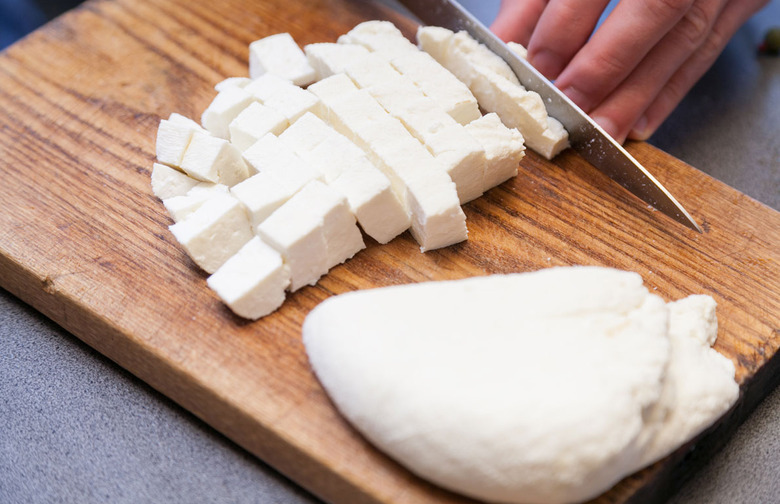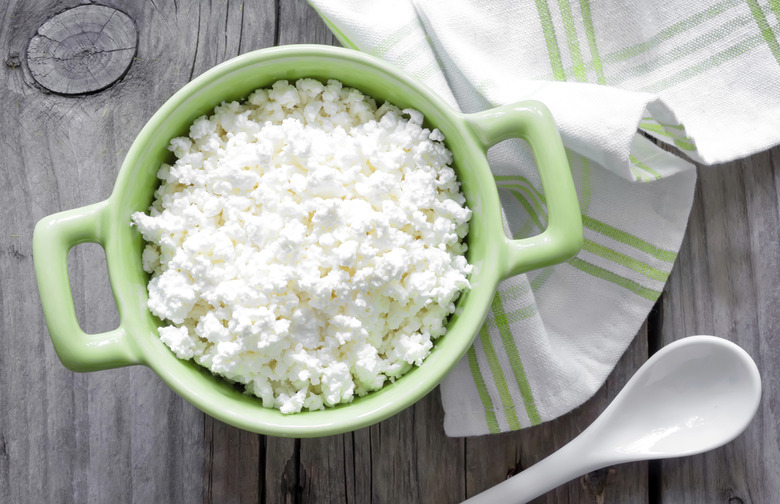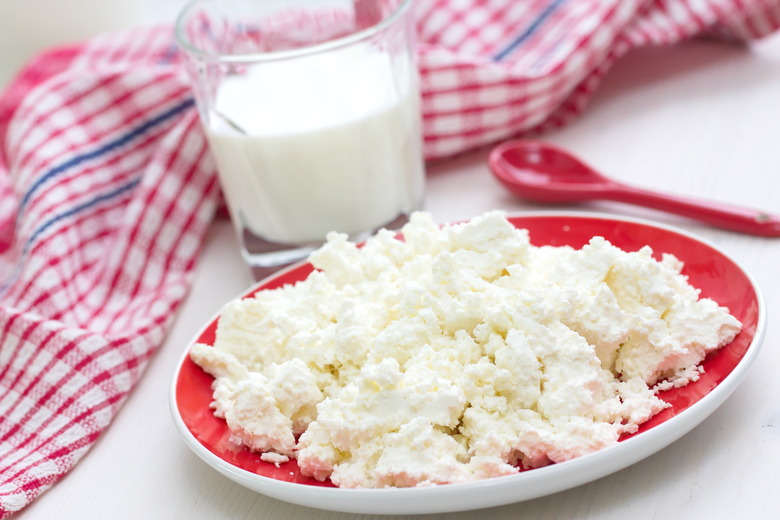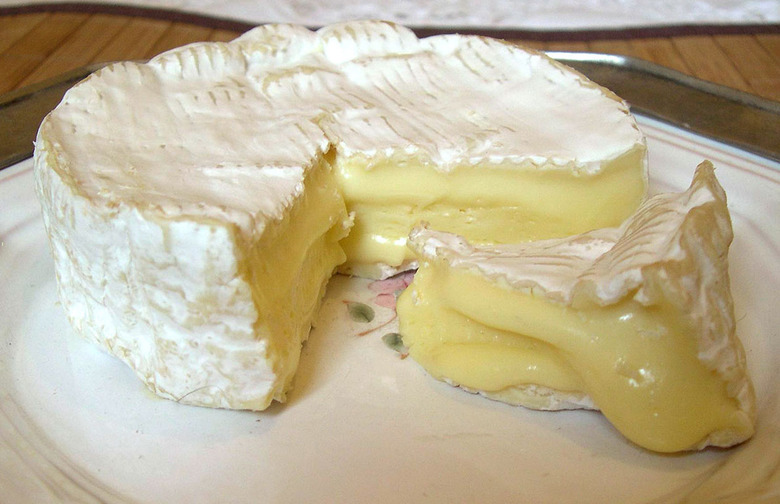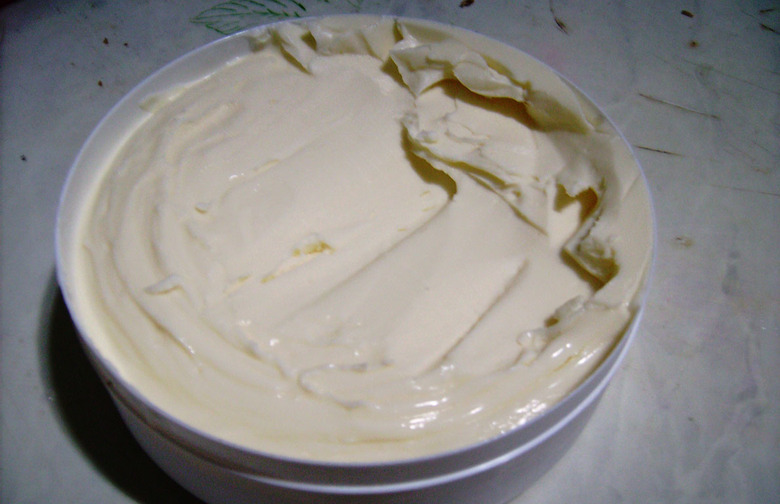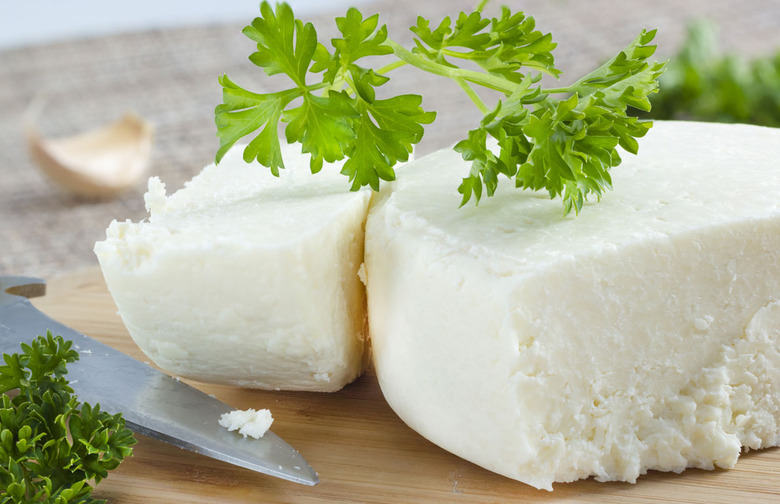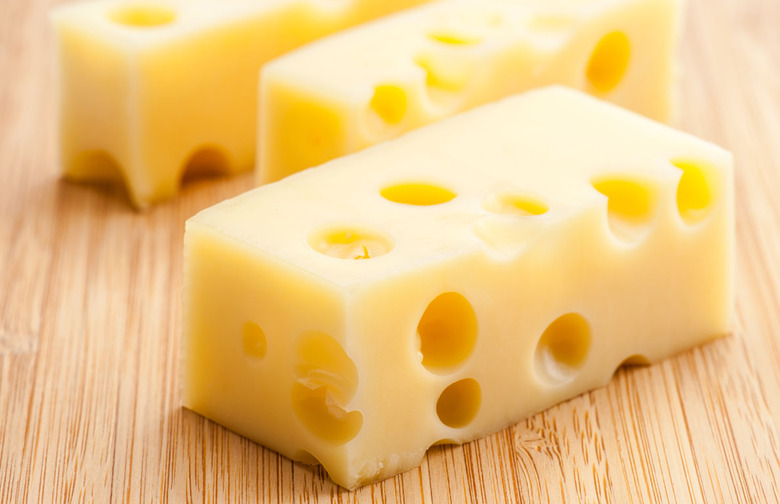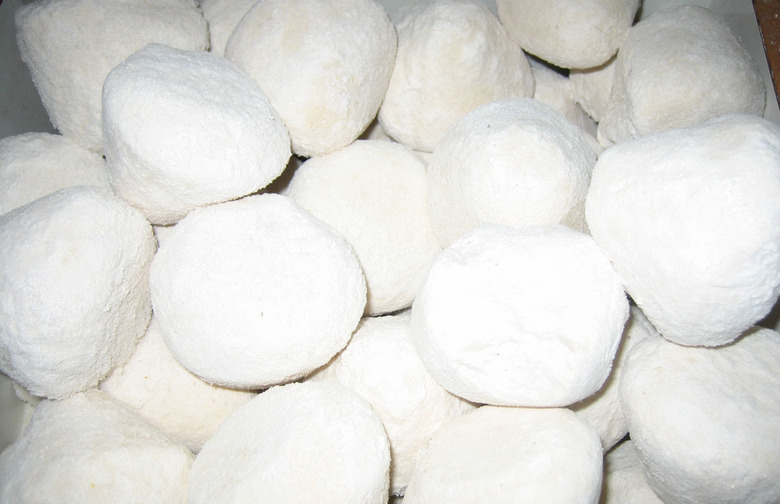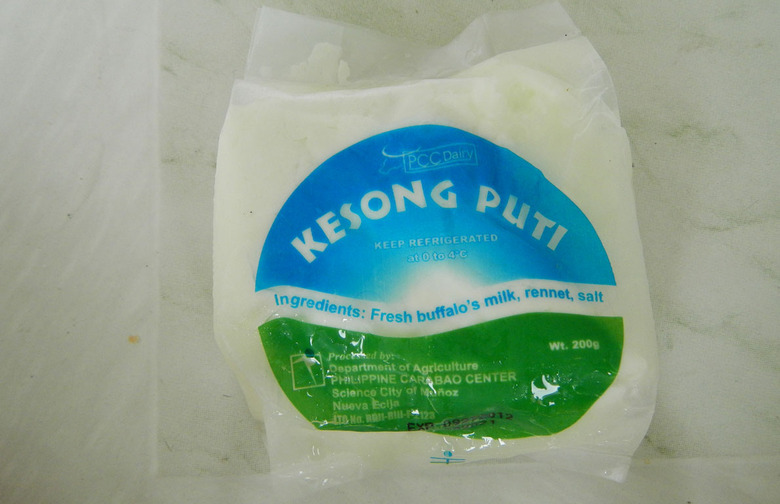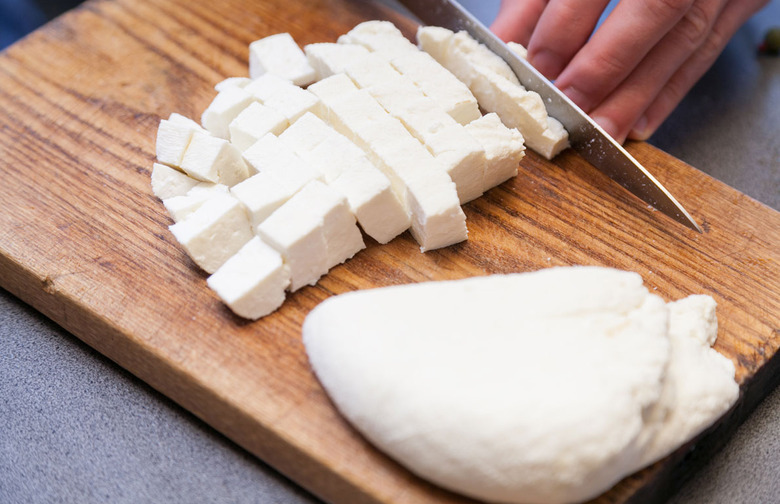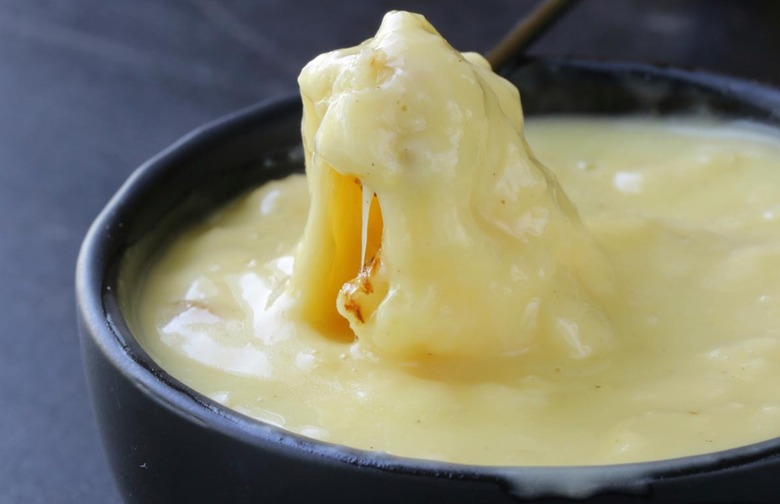This Is What Cheese Looks Like Around The World
The American writer and editor Clifton Fadiman once described cheese as "milk's leap toward immortality." James Joyce, on the other hand, wrote "Well and what's cheese? Corpse of milk." If cheese is a corpse, then there are thousands of delicious zombies around the world — a kind of immortality.
Ayib (Ethiopia)
The texture of ayib cheese has been described as similar to that of cottage, ricotta, and feta. Very mild, it is often served along spicy food like gomen — collard greens spiced with onions, garlic, ginger, and green chiles — to offset the heat and soften the tongue. You can make a similar dish, Ethiopian Spiced Cottage Cheese with Greens, at home.
Burrata (Italy)
A whole burrata looks like a small, white money bag, with skin made of mozzarella and insides stuffed with fresh cream and curds left over from the production of mozzarella. Traditionally made using water buffalo milk, burrata is now more commonly made with cow's milk. It was first made in the early twentieth century in the Apulia region of Italy.
Camembert (France)
Camembert originates in the eponymous town in Normandy, and the highly prized Camembert de Normandie is required by law to be made only with unpasteurized milk, making its availability outside France — most notably in the United States — scarce. With a ripened surface and creamy, oozing interior, it is similar to Brie, but with a more pungent aroma and taste. This cheese is so popular that McDonald's in France serves a McCamembert sandwich.
Catupiry (Brazil)
Catupiry is the most popular brand of requeijão — a loose, ricotta-like cheese — and has a texture more similar to that of cream cheese than that of the corn husk-wrapped requeijão you'll find in Central and South American markets in the United States. The word catupiry translates to "excellent" in the indigenous Tupi language. Its low acidity level makes it a popular ingredient in many dishes, as well as a spread on toast or even pizza. A popular dish that uses this cheese is shrimp with catupiry and hearts of palm.
Cotija (Mexico)
Traditionally a mountain cheese from the state of Michoacán, cotija was once produced only from July to October, when the cows whose milk is used are fed the rich grass that grows during the rainy season. Today, commercially produced cotija is available all year long. It is more often used as a topping than a main feature of dishes: grate it on top of enchiladas or tostadas; use it on grilled corn on the cob; or, if you like experimenting, try it in the form of cilantro-cotija pesto.
Emmental (Switzerland)
Emmental cheese, one of the three Swiss cheeses everybody should know (along with Gruyère and Gotthelf), is distinctive-looking as a result of the large holes running through it. Though Emmental is a Swiss cheese, it isn't "Swiss cheese" as we know it. While the two have some similarities, Emmental is aged over 100 days and is usually made in non-factory settings, white American-style Swiss cheese is almost always factory-made and aged around 60 days. Fun fact: the sizes of the holes in American-style Swiss cheese are regulated by the U.S. government, because their dimensions correlate to the amount of bacteria that permeates the cheese. The increased aging (and bacteria-permeating) time also gives Emmental a richer flavor.
Jameed (Jordan)
Somewhere between yogurt and cheese, jameed is a hard, dry ball made from cow's or ewe's milk that is often referred to as "rock cheese." Jameed comes in two colors but similar tastes: yellow jameed is sun-dried, while white jameed is dried in the shade. It is one of the main ingredients in mansaf, Jordan's national dish of lamb, rice, and nuts — one of the foods worth traveling to Africa and the Middle East for.
Kesong Putî (The Philippines)
Kesong putî is a cheese made from the milk of carabaos, a kind of water buffalo. It is soft and unaged, similar in taste to cottage cheese or queso blanco. So popular is this cheese that there is even a festival dedicated to it that takes place every year in the province of Laguna, just south of Manila. It is most commonly eaten with the Filipino bread rolls called pan de sal, which you can easily bake at home.
Paneer (India)
Paneer is one of the star ingredients of Indian cooking, as it provides a very hearty option for India's largely vegetarian population. Unaged and acid-set (it is made with curdled milk, vinegar, and lemon juice), paneer does not melt — which is why it is often used in hot curry or spiced vegetable dishes. There are a lot of different ways to cook paneer, in both traditional Indian dishes and non-Indian dishes as well.
Rushan (China)
Rushan translates to "milk fan" in Mandarin, because a popular way to cook this stretchy, mozzarella-like cheese is to roll it on the end of a stick and grill or fry it, which gives it a twisted, fan-like shape. It is a street food often topped with condensed milk, rose petal-infused honey, chocolate syrup, or fruit preserves. This is certainly one to add to our list of cheeses you've never heard of.
